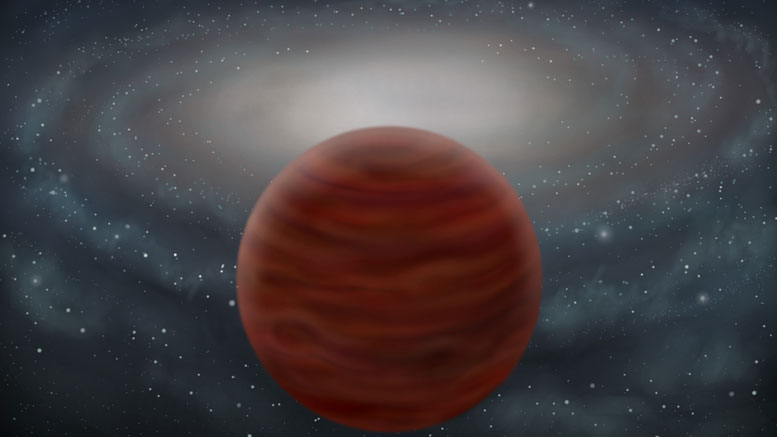
An artist’s impression of the new pure and massive brown dwarf. Credit: John Pinfield.
Astronomers have identified a brown dwarf that was formed about 10 billion years ago and is made of gas that is around 250 times purer than the Sun.
An international team of astronomers has identified a record breaking brown dwarf (a star too small for nuclear fusion) with the ‘purest’ composition and the highest mass yet known. The object, known as SDSS J0104+1535, is a member of the so-called halo – the outermost reaches – of our Galaxy, made up of the most ancient stars. The scientists report the discovery in Monthly Notices of the Royal Astronomical Society.
Brown dwarfs are midway between planets and fully-fledged stars. Their mass is too small for full nuclear fusion of hydrogen to helium (with a consequent release of energy) to take place, but they are usually significantly more massive than planets.
SDSS J0104+1535 is located 750 light-years away in the constellation of Pisces and is made of gas that is around 250 times purer than the Sun, consisting of more than 99.99% hydrogen and helium. It is estimated to have formed about 10 billion years ago with measurements also suggesting it has a mass equivalent to 90 times that of Jupiter, making it the most massive brown dwarf found to date.
It was previously not known if brown dwarfs could form from such primordial gas, and the discovery points the way to a larger undiscovered population of extremely pure brown dwarfs from our Galaxy’s ancient past.
The research team was led by Dr. ZengHua Zhang of the Institute of Astrophysics in the Canary Islands. He said: “We really didn’t expect to see brown dwarfs that are this pure. Having found one though often suggests a much larger hitherto undiscovered population – I’d be very surprised if there aren’t many more similar objects out there waiting to be found.”
SDSS J0104+1535 has been classified as an L-type ultra-subdwarf using its optical and near-infrared spectrum, measured using the European Southern Observatory’s Very Large Telescope (VLT). This classification was based on a scheme very recently established by Dr. Zhang.
Reference: “Primeval very low-mass stars and brown dwarfs – II. The most metal-poor substellar object” by Z. H. Zhang 张曾华, D. Homeier, D. J. Pinfield, N. Lodieu, H. R. A. Jones, F. Allard and Ya. V. Pavlenko, 22 February 2017, MNRAS.
DOI: 10.1093/mnras/stx350
arXiv

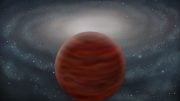
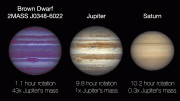
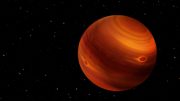
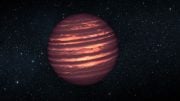
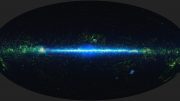
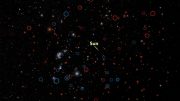
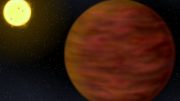
This is cool!